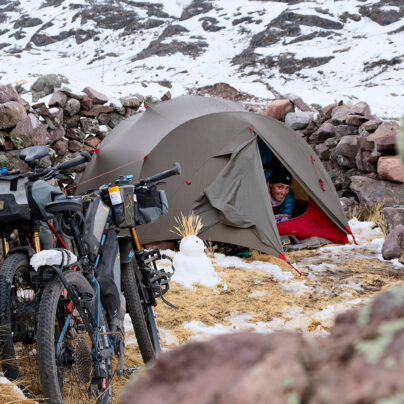Hiking Colombia’s Lost City of Teyuna
A Sidetracked Guide
Written by Geoff Bendeck / Photography by Nick Bookelaar
Swarms of aqua-blue butterflies, foaming waterfalls, hidden swimming lagoons, lime-green parakeets and chirping songbirds high up in the trees – this was what I’d come to find in the verdant Colombian jungle, along the winding trail to the Lost City.
Hidden in the Sierra Nevada National Park on Colombia’s north coast, the Lost City of Teyuna, known as the Ciudad Perdida, was off limits to visitors for years. But now, after Colombia’s dark period of paramilitary and drug-fuelled violence has come to an end, the pre-Colombian ruins are once more open and safe to visit. The indigenous inhabitants of the Sierra Nevada still hold these ruins sacred and carry out rituals there, but the site was not revealed to the outside world until tomb raiders stumbled across it in 1972. Today, it can only be reached on foot by a professionally led hike that takes four to six days to complete.
Selso, our guide from Wiwa tours, a company run by local indigenous people, arrived and greeted us in slow, lilting Spanish with a coy smile, shadowed beneath a cowboy’s moustache. He wore homespun cotton clothing with a small fibre bag full of dried coca leaves slung over his shoulder. A black ponytail swung beneath his palm-frond hat.
There were six of us total – a Welshman, Englishman, three Colombians who lived in Spain, and myself – on the five-day trek to the Ciudad Perdida and back. We made small talk as we set off, buoyant and excited, staring off in all directions as we paced alongside the river. Before long, Selso stopped us and said we could dive from a ledge overhanging the waters. I quickly learned it was best to hike in my swimming suit.
At a clearing I caught up to the three Colombians – a couple, and the woman’s brother – as they stared through their binoculars at something in the distance. The rest of the group soon joined us. A King Buzzard flapped idly over the forest, its vast wings half white and half black, identifying it conclusively as one of the largest scavengers on Earth. In Mayan folklore, these creatures were messengers between the gods and humanity.
The climb into the Sierra Nevada mountains was long and gruelling – a steep grind through thickets of trees and sweltering clearings. When we reached camp—four hours later—I was soaked in my own sweat, my legs were caked in the dirt of the trail, and it was with great relief that I dropped my pack and climbed into the hammock that would cradle me for the night. We ate dinner, then decided to go for a night-time swim. Five minutes’ walk from camp, a floodlight illuminated a perfect lagoon, fed by a waterfall cascading from the cliff above. One by one we dove into the crystal water and felt our aching muscles relax. At the far end of the pool, I could just make out a shallow beach, fringed by arborescent ferns and palms that led into the onyx darkness of the jungle beyond.
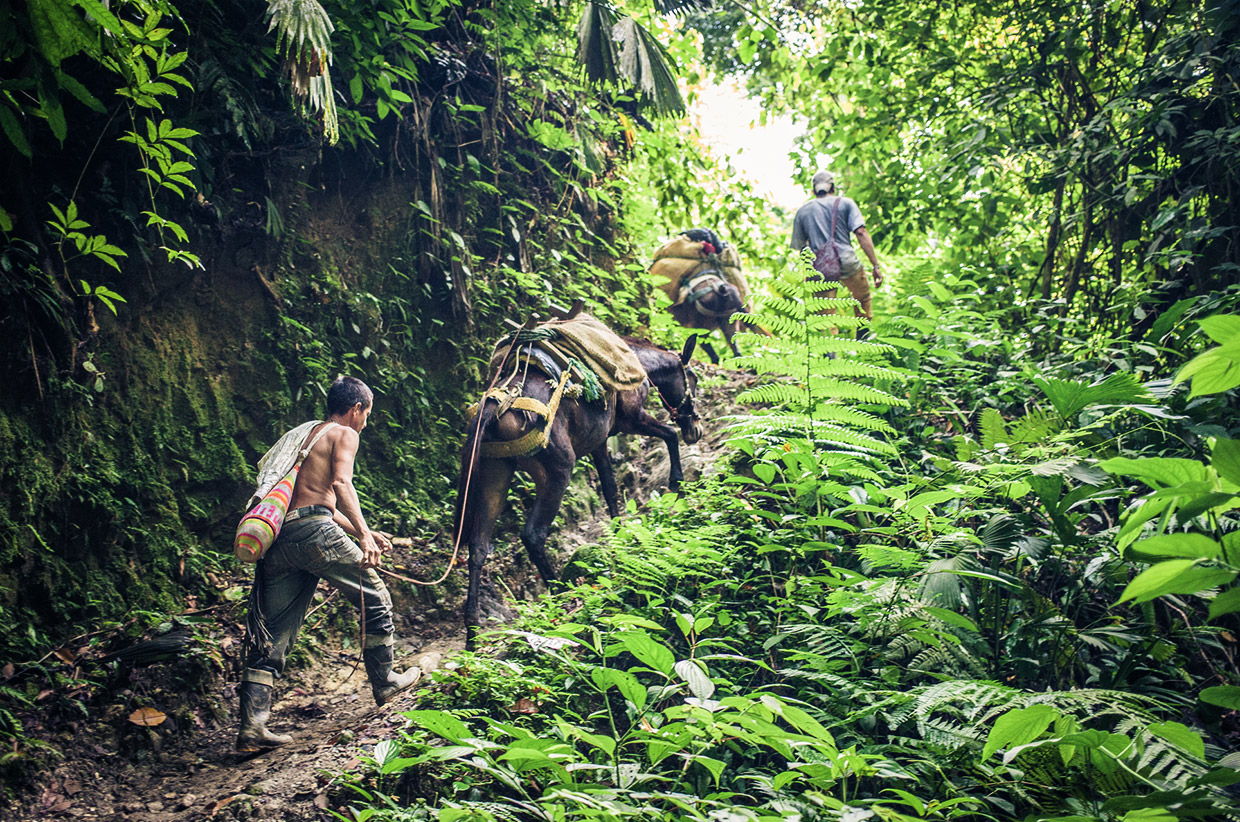
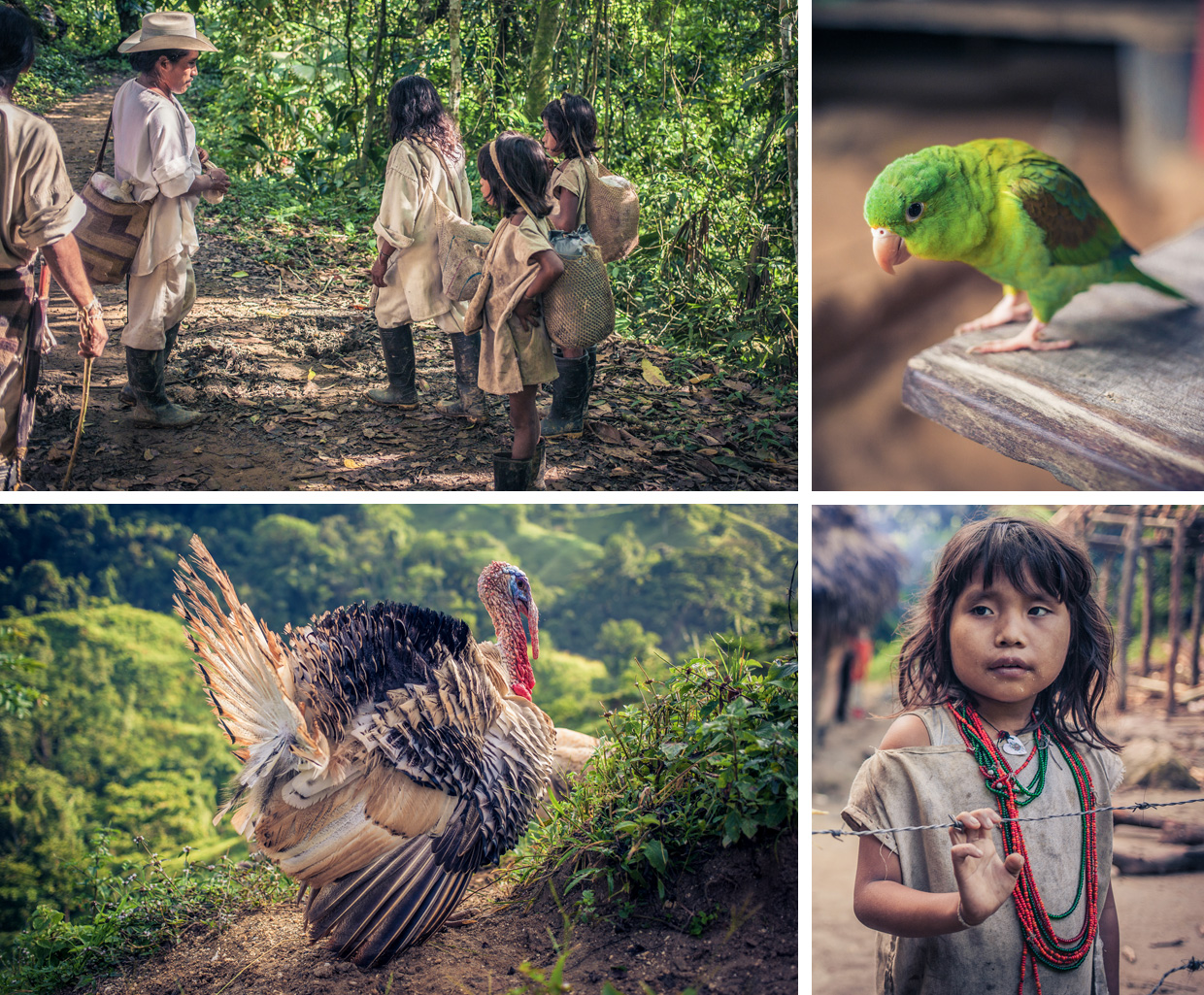

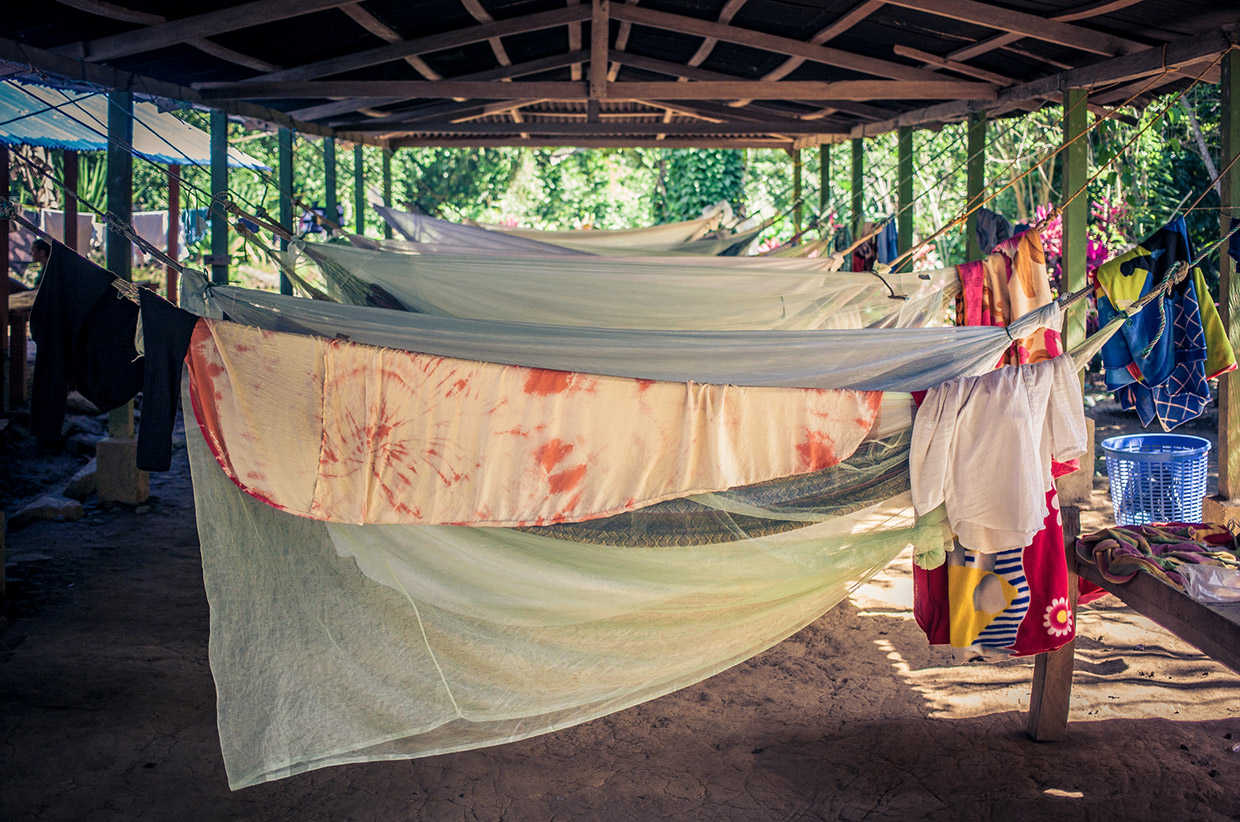
I woke in my hammock at first light. Butterflies, hummingbirds and small green parakeets flitted all around, attracted by the flowers and fruit trees lining the edge of our camp. One flower, small and yellow-white, resembled a miniature daisy. Another, a red orchid, was like an acorn with petals that resembled stars. Everywhere I looked there was extraordinary beauty both vast and minute.
Over a simple breakfast of eggs, fruit and bread, the camp cook, Enrique, talked about the changing climate of the area. Rivers that always ran were now dry. Winter seemed like summer. Selso listened and nodded his head but added nothing more.
At 8.00am we began our trek for the day, soon crossing a rickety footbridge over the river. After an hour we reached a clearing and traversed down a ravine towards our next camp. In the distance a mountain peak, clothed in green and swathed by impenetrable mists, lured us onwards into the jungle. By 10.00am I was starting to find the sun’s heat unbearable. My sweat-soaked shirt began to weigh me down. My 50-litre backpack was only half full yet I soon realised that I’d made an error of judgement – everyone else was only carrying small daypacks with a single change of clothes. By noon we had reached Camp Wiwa, the second camp.
The Wiwa family who cared for the camp had several small children, of indistinguishable age or sex, with long black hair that reached to their shoulders. They wore cotton dresses that resembled potato sacks – ill fitting, simple garments with holes for the neck and arms, open at the bottom. The kids played soccer barefoot and cautiously let us join in. A rabble of yellow-brown butterflies settled into the air at dusk.
At night, beneath lit candles, we sat around the picnic table as Selso told us the story of his people. The Sierra Nevada National Park is home to four indigenous tribes – the Wiwa, Kogi, Arhuaco, and Kankuamo – the descendants of the original Taironas. The four tribes consider themselves the custodians of the earth. They live in harmony with the land, taking only what is necessary, and protecting it from developers. Selso explained his poporo: a hollowed-out gourd, with a stick rather like a paintbrush, which resembles a pen and ink pot. Inside the poporo is a powder of crushed sea shells. The powder activates the coca leaves, which suppress hunger and act as a mild stimulant. Excess powder turns to a paste on the stick and, when rubbed on the external part of the gourd, adds to the thickness of it over time.
I went to sleep early that night after Selso’s talk, falling into my hammock, with the new world I’d entered heavy on my mind. ‘There’s no mystery to the jungle, regardless of what some people think,’ Álvaro Mutis, Colombia’s second most famous author said in his masterpiece The Adventures and Misadventures of Maqroll. ‘That’s its greatest danger … Intelligence is blunted here and time is confused, laws are forgotten, joy is unknown, and sadness has no place.’ I don’t know why Mutis’s words came to me then, but the words struck me as honest. The jungle we were passing through was naked of all illusion.
The Sierra Nevada National Park is home to four indigenous tribes – the Wiwa, Kogi, Arhuaco, and Kankuamo – the descendants of the original Taironas. The four tribes consider themselves the custodians of the earth. They live in harmony with the land, taking only what is necessary, and protecting it from developers.
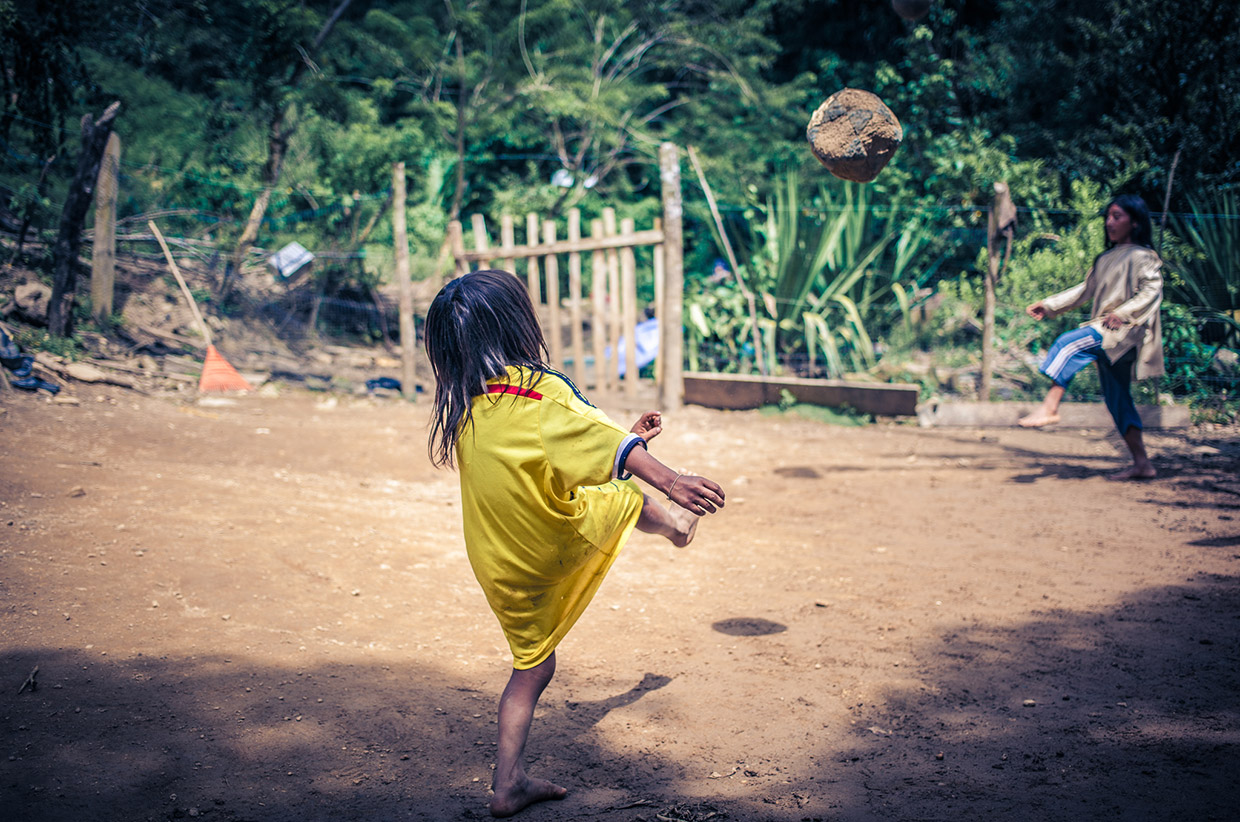
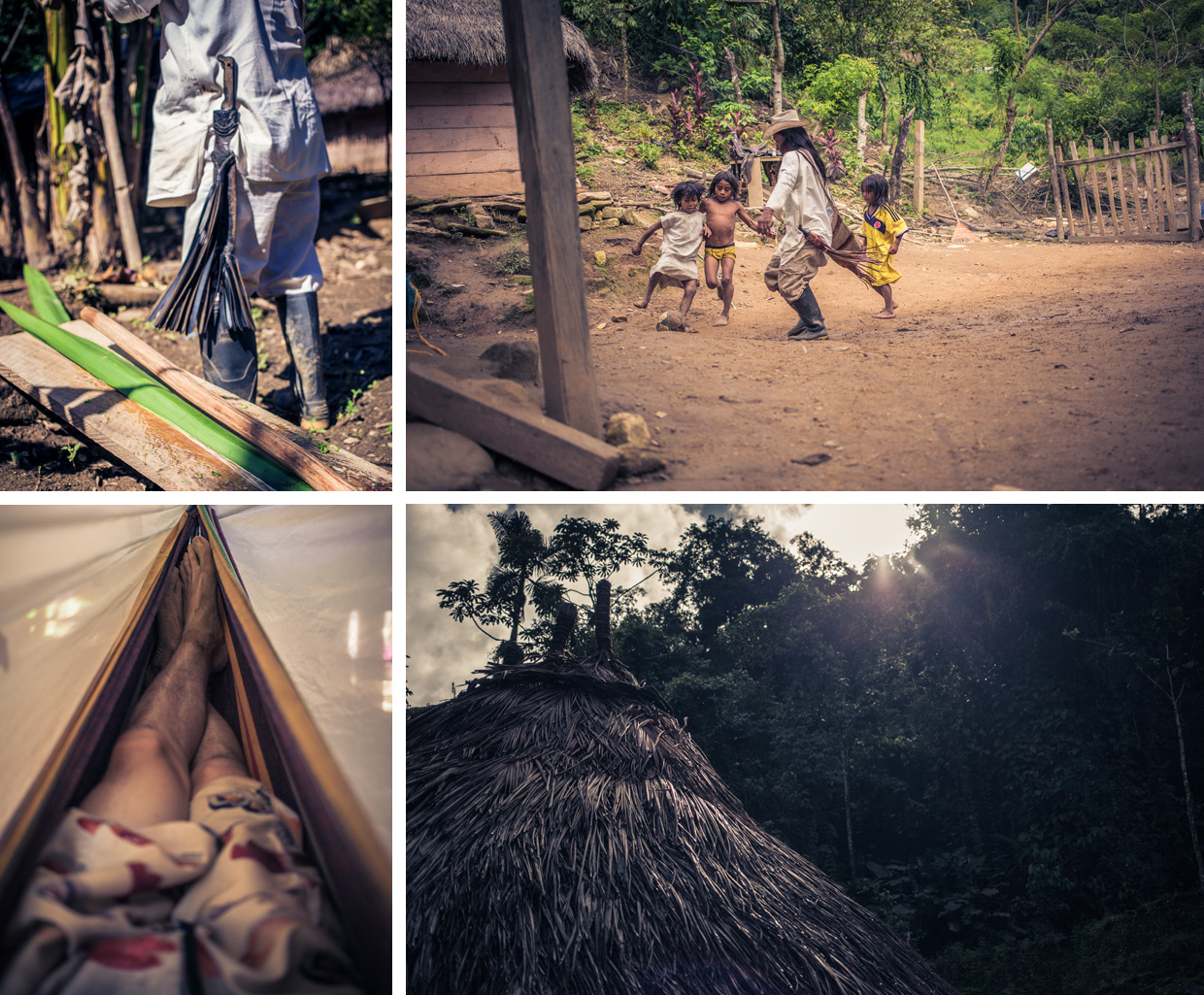
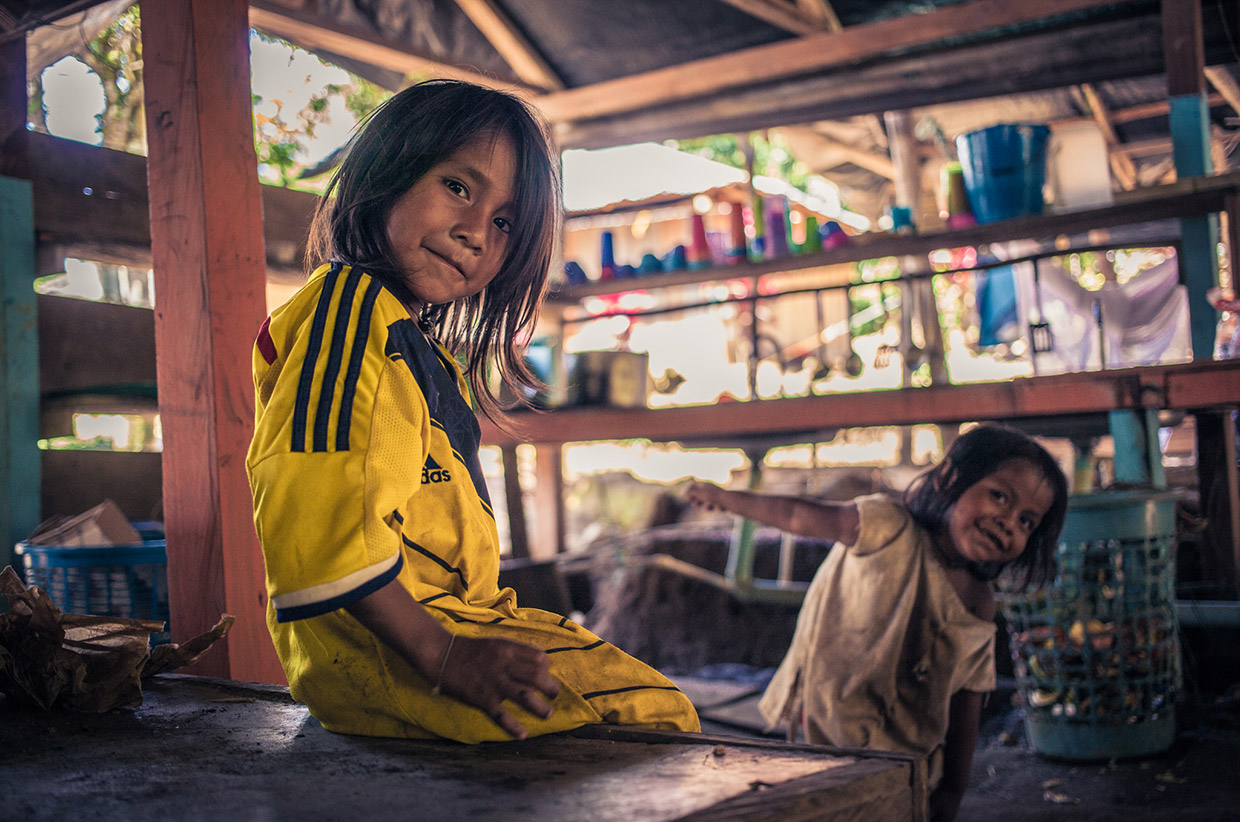
On the fourth day of our trek we woke early to climb the 1200 stone steps. The canopy enveloped us, blocking out the sunlight as we wound our way up to the ritual stone and grass platforms. The mountain awoke in movement and music. The air thrummed with vitality. Even the mosquitos and gnats felt the inspiration, diving into us with an unprecedented vigour and determination.
At the top of the steps we reached the initial settlement, which consisted of several large grass circles with low stone boundaries. Towering hardwood trees grew between the mounds. Selso gathered us and, in reverent tones, told us the story of this mysterious place. The Tairona abandoned the site when the Spaniards arrived to Colombia’s north. The invaders founded the city of Santa Marta in 1525 [CQ] and set about killing the indigenous people of the area. The Tairona disappeared back into the jungle, moving higher up into the mountains.
Next to where Selso stood, a stone tablet map marked the Lost City alongside Machu Picchu – that other city left abandoned and lost for so long – and the other major cities of the time.
Slowly we wandered through the ruins. The colours progressed from emerald to chartreuse, following the stone passageways that wound into and out of the canopy. The jungle shrouded the bones of the man-made that everywhere protruded through from beneath.
And then we were there, in front of the giant terraced platforms that slowly climbed one above the other – concentric rings that diminished in circumference, one after the other. To the west I could see the cascading waterfall and to the east rose the sacred mountains, still shrouded in their haloes of mist. Selso told us they chose this spot, nestled between waterfalls that the Tairona diverted, because of the dual rivers. How had they carved these magnificent platforms? We stood at the highest one and looked down at the others. I imagined what it must have been like to live in such a place.
We began to wind our way back down, inspecting the advanced canal system that brought the river water straight through the city. Giant toads sang to us. To our right Selso spotted a baby snake – the feared Fer-de-Lance viper – but, scared, it quickly slithered off back into the undergrowth.
By 11.00am we were heading back to Camp Paraiso and, after a quick lunch, began the descent to Camp Two. We trekked in silence – every one of us felt exhausted in body and mind. By 4.00pm my left knee began to ache as we descended steeply to sea level. Selso cut me a walking stick but I fell far behind the rest of the group, putting all the energy I had left into keeping going, one step after another. I was near my breaking point when another group on the trail caught up to us. An elderly couple, youthful and active, came up to pass me. The woman was speeding along with her trekking poles and offered to trade. ‘I’m okay, really!’ I said, forcing a smile. She eyed me with a knowing grin and let me pay for my pride, passing me and continuing on out of sight.
I came into camp after dark and lurched into my hammock. The next morning we would have a light three-hour hike back to modernity. It was a bittersweet realisation. Lost out in the Sierra Nevada, walking towards the time-frozen past, I’d felt a bit like an itinerant explorer of old – setting out into the beyond of the pulsing yet silent dawn, knowing just around the next bend, choked in verdant overgrowth, more lost cities awaited.
ADVICE
• Bring good waterproof hiking shoes, or buy plastic rain boots in the Santa Marta public market. During the rainy season you will be trekking at times through serious mud, streams and wading rivers.
• All tours are run in Spanish, so if you don’t speak the language ask to be included in a group with someone who does.
• Pack light, there are several dizzing climbs and the sun will be relentless.
KIT LIST
• One or two swimsuits (Best to hike in because of the opportunities to swim daily.)
• A good hat
• Several pairs of good socks
• A moisture-wicking t-shirt or sports jersey
• One light sweater or long sleeve t-shirt for sleeping (the temperature drops a fair amount at night.)
• Sweatpants or athletic pants (to sleep in and to have something to change into and wear around camp.)
• A lightweight rain coat
• Insect repellent
• Headlamp (at times you might find yourself hiking in the dark)
• Sunscreen
• Two refillable water bottles (Each camp has water purifiers)
• A small towel
*Optional
• Lightweight binoculars as there will be many opportunities to birdwatch.
• Trekking Poles. The path can be slippery at times so if you are not the most confident hikers these will undoubtedly make your trek a more enjoyable experience.
Geoff Bendeck’s essays have appeared in the New York Times, Men’s Journal, Paris Review Daily, Electric Literature, Litro UK, and the Washingtonian Magazine, among others.
Website: geoffreybendeck.contently.com // Twitter: @geoffbendeck // Instagram: geoff_bendeck
Nick Bookelaar is an architectural photographer from Eindhoven, the
Netherlands. Mostly due to his curiosity, sense of adventure and
creativity, he and his camera gets sucked into all sorts of mischief.
He enjoys a good laugh, nice people and interesting places.
Website: ickbookelaar.nl // instagram @bookelaar
